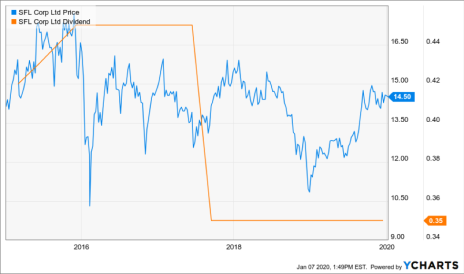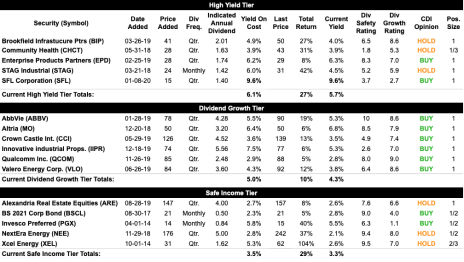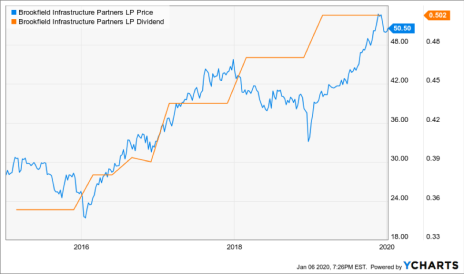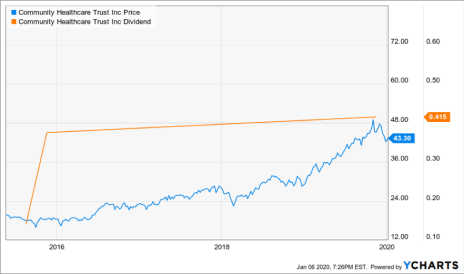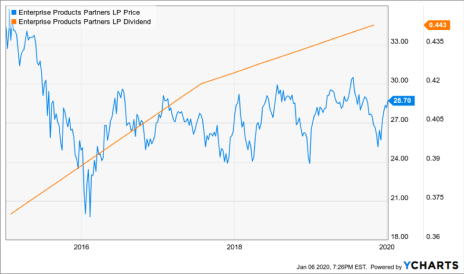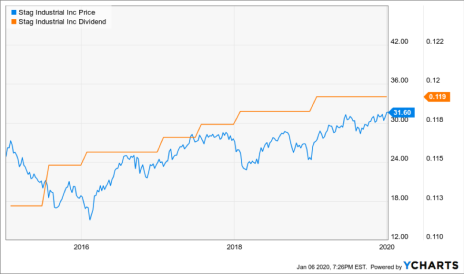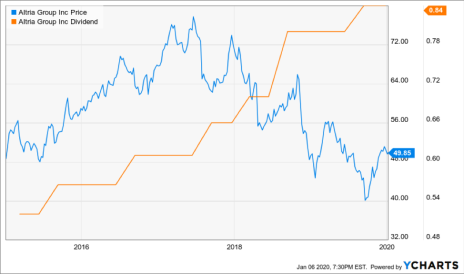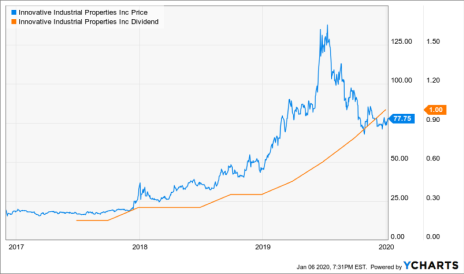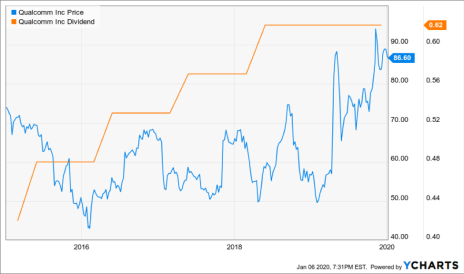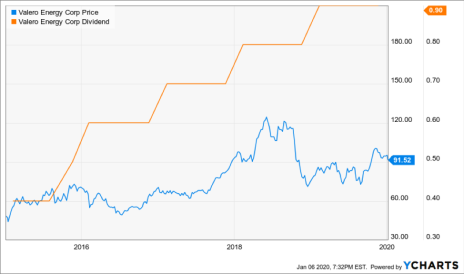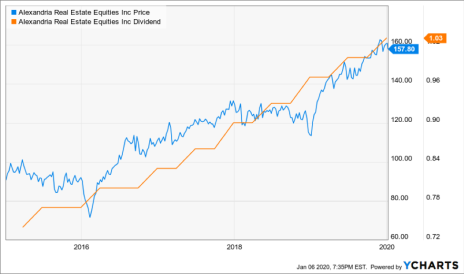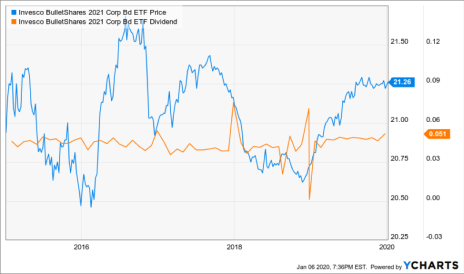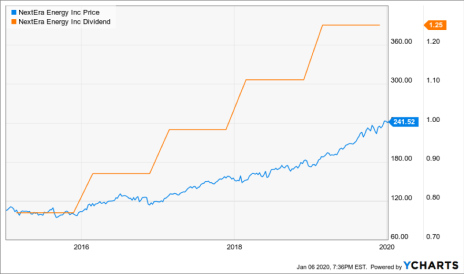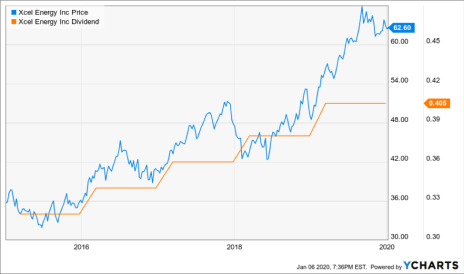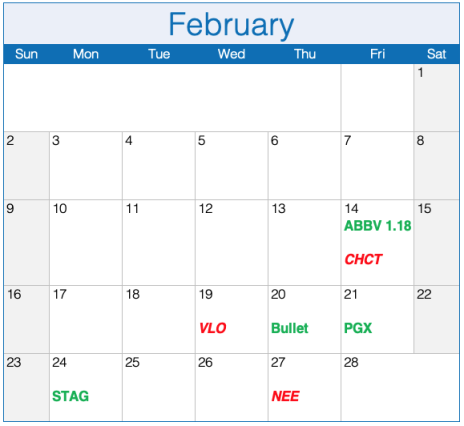We enter 2020 in a tricky situation. It is very late in the recovery and bull market and the market is near an all time high. While the bull market is likely to last a while longer, this still isn’t a great place to be in general. However, while the overall market is expensive there are rare pockets of great value.
In this issue I highlight a shipping stock that has remained profitable and paid dividends every single quarter through an industry depression. That company is yielding a massive 9.6%. And industry conditions are improving. It may be 2020 in the overall market, but I found a place where it’s 2009 again.
Cabot Dividend Investor 120
[premium_html_toc post_id="194815"]
A Jewel among the Wreckage
This is one tough stock picking environment. It’s obscenely late in the bull market and economic recovery with the market near an all time record high. Sure, a similar situation has existed for several years. Okay, the economy is still pretty good. I’ll admit that I wouldn’t be terribly surprised if this turns out to be another strong year in the market.
But do you really trust it?
This is the part of the movie where bad things can happen. It’s bad writing to have the market crash when everybody expects it. The way to do it is to lull the audience into a state of complacent optimism, and then whack’em good. Maybe I’m being paranoid. But I refuse to pay up for a stock under these circumstances.
It’s just bad karma to sail into this unknown with a stock priced at early 2020 sensibilities. You get a similar sensation walking around a bad section of New York City with your wallet hanging out of your pocket.
Fortunately, the overall market doesn’t tell the whole story. Bargains actually still exist out there for those that know where to search. There are still relatively inexpensive sectors of the market like Energy, Financial and Healthcare. Then there’s the shipping sector. That’s where you’ll find some serious smoldering wreckage.
Stocks in the commercial shipping business have been absolutely destroyed. Several of the biggest players in the industry are still down 80%, 90% or more from the all time highs. A boom and bust global economy along with a disruption of the supply/demand dynamic has left this sector for dead on the side of the road.
But shipping is a practical business that isn’t going anywhere. The shipping industry today is responsible for the carriage of roughly 90% of all goods traded and exchanged throughout the world. And the volume of global trade is trending higher. After a wild ride, conditions in the sector have stabilized and companies are again profitable. Plus, the companies that survived the tumult are battle tested to say the least.
It is from this wreckage that I pluck this month’s featured buy. I found a shipping company that has remained profitable and paid a high dividend every single quarter through one of the most tumultuous times an industry can experience. The stock is now cheap and paying a stratospheric 9.8% yield as industry conditions continue to improve.
It may be 2020 in the overall market. But it’s 2009 again for this stock.
What to Do Now
There are several buy rated stocks in the portfolio. And I like all of them. I love all my children equally. But I understand that you might be new to the newsletter, or maybe you can only buy a few stocks. For that reason, here are three “buy first” stocks.
If I could buy only three stocks at this point in time I would buy Enterprise Product Partners (EPD), Qualcomm (QCOM) and Innovative Industrial Properties Realty Trust (IIPR). EPD has everything going for it. It’s cheap, earnings are growing and it pays a massive dividend that is rock solid. While the stock hasn’t performed yet, I believe it’s only a matter of time and you’re well paid to wait.
Qualcomm is smack dab in the middle of the 5G phenomenon that I think will have a big impact on the market this year. I’m surprised the stock is still as cheap as it is. That’s only because too many investors have the kind of near-sightedness that can’t be corrected with glasses. Oh well, more for us.
IIPR is way off its highs because the price fell in sympathy with the overall marijuana sector. But the company is making money and growing earnings at a fierce clip. Revenues have increased 124% and analysts are expecting even better growth next year. Meanwhile, the stock is coming of a sustained downturn in a sector that bounces up and down. You also get better than a 5% yield.
Featured Buy
SFL Corporation (SFL)
Commercial shipping is an industry that employs seagoing vessels to transport goods over water for a fee. It is one of the oldest industries in the world that existed thousands of years ago.
Water is by far the most efficient, cost effective and environmentally friendly way to move large quantities of heavy goods all over the world and facilitate trade. In fact, ships transport 90% of goods traded through the world. Shipping is the ultimate facilitator of trade and the respiratory system of the global economy.
And the volume of world trade is increasing.
For many decades, the pace of world trade sort of moved along at a sluggish and predictable pace. But the volume of world trade absolutely exploded last decade. The rise of China in particular as well and India, Brazil and other emerging market economies exponentially and permanently increased the trade of goods across the globe.
The volume of world trade has doubled in this century alone. And world trade is expected to trend even higher in the years ahead as an expanding global middle class demands more merchandise. That sounds like a great situation for shippers. But it hasn’t been.
Here’s a look at the prices of the some of the world’s largest shipping company stocks from the highs of before the financial crisis to the prices today.
What happened?
Much of the story is told by the Baltic Dry Index (DBI), a shipping and trade index that measures going dry bulk shipping rates for the transport of dry goods like steel, coal and grain. It is considered the bellwether for the shipping industry, reflecting the current supply/demand dynamic and the current rates for the transport of goods via the waterways.
World trade volume exploded 60% between 2002 and 2007. There wasn’t enough shipping capacity to accommodate the rising demand and shipping rates skyrocketed. The BDI went from under 1000 in 2002 to over 11,000 in 2008. Rates crashed during the financial crises and then recovered to about 4000 then trended down to a low of about 3000 in 2015. The index is now at about 1800.
Last decade, shipping companies ordered new ships like crazy to take advantage of the boom times in the industry. The additional supply hit the market at a time when the global economy was slower. Shipping companies had to bear the cost of new ships at a time of crashing rates and fluctuating trade volume. Then they had to deal with the global economic slowdown from 2014 through 2016 and more recently the trade war.
Now, the tumult is over and the supply/demand dynamic has evened out. Shipping rates are now back in the same range as before the boom last decade. But world trade continues to trend higher. Rates have recovered and profits have returned. But shipping stocks have barely budged. I think the last investor limped off bleeding profusely years ago.
The survivors are battle tested, leaner and meaner and facing less completion in a profitable industry that is recovering. In the near term, the global economy, by most accounts, is improving and there is at least a truce in the trade war.
There is one company that has remained profitable through the entire ride. And it should do very well in the years ahead.
Established in 2003, Bermuda-based SFL Corporation (SFL) is one of the world’s largest shipping companies in the world. The current portfolio consists of 92 assets including tankers, dry bulk ships, liners and offshore vessels and rigs. The company generates consistent cash flow from long term charters and growth from an increasing asset base.
Tankers ship liquids like oil. Dry ships move raw materials like steel, lumber and grain. Liners ship an assortment of things like boxes and refrigerated products. And SFL also owns offshore rigs and the accompanying vessels.
The diversification of the asset portfolio is very important. It insulates the company from slumps in any one kind of shipping. Sometimes tankers are thriving and dry bulk is hurting and vice versa. The diversification, along with the long-term contracts, has been the key to stability. SFL has about 90% of revenues guaranteed by long term charter contracts. Short term shipping rate volatility barely affects earnings.
As a result, the company has remained profitable and paid a dividend for 63 straight quarters, throughout a depression in its industry. No other shipping company has done that.
The Dividend
SFL pays a quarterly dividend, currently $0.35 per quarter which is $1.40 per year and translates to a massive 9.6% yield at the current share price (14.50). The company has maintained the same dividend for the last 11 quarters. The dividend has been cut twice, once during the financial crisis and again in 2017 when the company severed ties with former parent Frontline (FRO) and lost some ships when client Seadrill went bankrupt.
The dividend is backed primarily by the predictable charter revenue and the company has more than enough cash flow to service debt and pay the dividend. The company also seeks to grow its asset base, and hopefully the dividend, over time. The asset base has increased from 70 to 92 since 2017.
The primary risks to the high dividend are that it contracted customers go broke or rates get renewed at low levels. There aren’t any contract expirations in the near future and the company has high quality customers including Phillips 66 (PSX), Conoco Phillips (COP) and Hyundai Motor (HYMTF).
Over the last five years, the price of SFL has increased by about 3%. That’s not bad considering the Invesco Shipping ETF (SEA), which tracks stocks in the Dow Jones Global Shipping Index, was down over 44% over the same period. It also well worth noting that because of the consistent high dividend the total return for SFL over those five years was 54% and 68% with dividends reinvested.
Despite the abysmal performance over the past decade, the shipping sector actually has some decent momentum. Morningstar’s Marine Shipping group returned 31% over the past year. SFL posted a total return of over 38% for the last year.
SFL should be able to maintain that massive dividend and the stock should perform well as industry conditions continue to improve.
SFL Corp. Ltd. (NYSE: SFL)
Security type: Common Stock
Industry: Maritime Shipping
Price: $14.51
52-week range: $10.74 - $15.10
Yield: 9.6%
Profile: SFL is one of the world’s largest shipping companies with a diversified portfolio of different types of ships and roughly 90% of revenue generated from long term charter agreements.
Positives
- Shipping stocks are still cheap because of years of tough industry conditions.
- A strengthening global economy combined with improved fundamentals in the sector should support the stock in 2020.
- SFL has proven more stable than competitors because of a diversified portfolio of ships and long term charters.
- Stock performance has greatly exceeded the industry and SFL has paid a dividend every quarter since the IPO, despite horrid industry conditions.
Risks
- Shipping is vulnerable to trade and the strength of the global economy.
- SFL has cut the dividend in the past.
- Investors have shunned the sector after years of poor performance.
Portfolio at a Glance
Portfolio Updates
High Yield Tier
The investments in our High Yield tier have been chosen for their high current payouts. These investments will often be riskier or have less capital appreciation potential than those in our other two tiers, but they’re appropriate for investors who want to generate maximum income from their portfolios right now.
Brookfield Infrastructure Partners (BIP – yield 4.0%) – The global infrastructure company had a great 2019, returning over 50%. That said, valuations aren’t that stretched because the stock had a rotten 2018. Going into 2020 I still like the way the stock is position as demand for safe, revenue generating companies should remain strong. As well, infrastructure is a growing subsector that is increasingly popular with investors, almost like a utility on steroids. The stock has pulled back a little bit from the high in November but the minor consolidation is healthy. BIP is still rated HOLD because it had a sizable run up and I will wait to upgrade it if there is a further selloff. HOLD
Community Health Trust (CHCT – yield 3.9%) – Of all the REITs in this portfolio this smaller Healthcare REIT performed best in 2019, returning over 50%. It also took the biggest hit as the Real Estate sector struggled during the market rise. While all the REITs struggled for a while, the other ones have recovered or at least stabilized over the past few months, but not CHCT. This REIT is probably taking it the worst because it had been the highest flying. The stock has moved higher over the past week and we’ll see if the recovery continues. Valuations had gotten stretched which is why I sold two thirds of the position while things were good. The stock has moved higher over the past week and we’ll see if the recovery continues. HOLD
Enterprise Product Partners (EPD – yield 6.3%) – I’m very positive on this midstream energy company for 2020. Other low-priced value stocks have already rebounded but energy has been lagging. Everything is working for this company right now, except performance. Earnings are growing as many new projects continue to come on line. The dividend is well supported. And the stock is cheap in a high priced market. At some point, investors will awaken to the story in a yield starved world. The stock has definitely been performing better since it dipped to about $25 per share in November. We’ll see if the stock continues to rally. It is still selling 30% below the 2014 high despite the fact the earnings have been rising ever since and revenues are up 25% on a trailing year basis. It’s a great yield and a great value here. BUY
STAG Industrial (STAG – yield 4.5%) – The industrial REIT is a low drama, steady performer that pays dividends every single month. STAG has also been clearly trending higher over past four months plus. It behaves differently than its REIT peers that have struggled over the same time frame. While most REITs get neglected during the market rallies this one participates. It is likely because as an industrial REIT it is more cyclical than its peers. Valuations are not out of whack but not cheap either. I like the way this stock held its own during a rough period for other stocks in the sector. We’ll see if it keeps on rising. HOLD
Dividend Growth Tier
To be chosen for the Dividend Growth tier, investments must have a strong history of dividend increases and indicate both good potential for and high prioritization of continued dividend growth.
AbbVie (ABBV – yield 5.3%) – Since rising 40% from the summertime lows, the biotech giant has stabilized with a still upward bias. And it is still selling at a very cheap valuation while the environment surrounding the stock is markedly improving. Healthcare has been the best performing market sector of late with biotech stocks leading the pack. It looks like attractive valuations and a defensive business are outweighing concerns about election talk regarding healthcare reforms. Meanwhile, the pipeline looks great and the merger with Allergan (AGN) should go through early next year. The stock already had value and great dividend. Now is has momentum too. BUY
Altria (MO – yield 6.8%) – The cigarette maker has had solid momentum since early October when value stocks started to come alive. But there is always another negative headline regarding E-cigarettes around the corner to knock the stock back. I think many investors are missing the longer view. Either E-cigarettes will be outlawed by the regulators or Altria will make JUUL very profitable. If E-cigs don’t make it, Altria will sell more tobacco. If, which is more likely, vaping thrives, Altria will make the position in JUUL work with its regulatory experience and deep pockets. Altria has been contending with regulators for decades and the stock has been wildly successful. It’s also still growing earnings and the massive dividend is safe. BUY
Crown Castle International (CCI – yield 3.5%) – This 5G cell tower REIT took it on the chin during the sector selloff this past fall. CCI had fallen from a high of about 150 to about 130. But it has since rebounded nicely and recouped most of those losses. Despite the recent selloff the stock is still selling well above its short and long term moving averages and is still in an upward trend. Let’s not forget that this is a company with a huge tailwind of the 5G buildout going for it. Analysts forecast an average of better than 20% per year earnings growth over the next five years. It has both the safe characteristics inherent in a REIT and solid growth. BUY
Innovative Industrial Properties (IIPR – yield 5.3%) – This marijuana REIT is making money and growing earnings in an emerging industry and is coming off a huge selloff in the overall sector. Earnings grew 124% in the past year and are expected to be even better in 2020. Meanwhile, it pays a 5.3% yield at the current price. Admittedly, the stock has been volatile since being added to the portfolio. But I believe as the sector rebounds, or even stabilizes, this stock should benefit greatly in 2020. It’s a superstar currently on sale. BUY
Qualcomm Inc. (QCOM – yield 2.8%) – The 5G chip company is well set up for a sizable earnings boost in the quarters ahead as demand for its 5G chip hits the bottom line. The growing earnings will prevail and I believe the stock can move substantially higher in the year ahead. In the near term it should benefit from good trade headlines and the phase one deal will likely be signed later this month. Some argue that the benefit of 5G is somewhat baked into the price already but I disagree. 5G is not a garden variety rollout and the earnings growth should be quite substantial. This is still a good entry point. BUY
Valero Energy Corp. (VLO – yield 3.8%) – The refiner stock has trended down recently. After going from just over $70 a share in late August to over $100 in the first half of November, VLO has pulled back to the low 90s. Part of it was a healthy consolidation after a strong run higher. But recently it’s being hit by the threat of higher crude oil prices as tensions with Iran escalate. More expensive crude oil means higher costs and the possibility of lower margins. I honestly don’t know how this thing with Iran will shake out. However, Valero will benefit from the new IMO fuel standards in both new business and possibly lower refined product production by competitors. A big spike in crude oil prices aside, Valero should see significantly growing earnings in 2020 as crack spreads improve and demand is strong. BUY
Safe Income Tier
The Safe Income tier of our portfolio holds long-term positions in high-quality stocks and other investments that generate steady income with minimal volatility and low risk. These positions are appropriate for all investors, but are meant to be held for the long term, primarily for income—don’t buy these thinking you’ll double your money in a year.
Alexandria Real Estate Equities (ARE – yield 2.6%) – This life science and research lab REIT is down almost 4% on the day as I write this. The reason is simple. The REIT announced a public offering of an additional six million shares at $155 per share. This happens with tax advantaged securities like REITs, MLPs and BDCs. Since the companies are required to pay out most of earnings in dividends, they need to raise capital by borrowing or issuing new stock. New stock is a bummer because it dilutes existing shares. That said, the dilution is minor because ARE has 115 million shares outstanding. This should only be a blip as the business is very strong. The stock returned over 40% in 2019 and has blown away the performance of its peers in every measurable period over the last ten years. HOLD
Invesco BulletShares 2021 Corporate Bond ETF (BSCL – yield 2.8%) – The best thing I can say about this short-term, investment grade bond ETF is that there’s nothing to say. These bonds remain steady and predictable, just like they should. It’s comforting to have something in a portfolio that pays interest and is unaffected by market volatility. It tends to steady out portfolio performance and can help keep you invested in times of volatility. It also a nice yield for bonds that mature at the end of the year. BUY
Invesco Preferred ETF (PGX – yield 5.5%) – This preferred stock ETF is a great way to get a high yield and diversify into an asset class that is not correlated to the stock or bond markets. It is a rare way to get a good yield in a low interest rate world without taking on much risk. The performance has been solid and it remains a nice position to have in the late stages of the market cycle where uncertainty in the stock market continues to remain a factor. BUY
NextEra Energy (NEE – yield 2.1%) – There is still a strong appetite for safety and yield and NEE is one of the very best in class. Investors love this company and it rarely misses a beat. It’s right back at new all time highs. This largest American utility by market cap combines steady cash flow from its stellar Florida Power and Light division with growth from the alternative energy business. NextEra is a huge player in fast-growing clean energy and is the world’s largest producer of wind and solar energy. It is also shareholder friendly, targeting 12% to 15% annual dividend growth through 2024.The only chink in the armor is a high valuation. But momentum still looks great. HOLD
Xcel Energy (XEL – yield 2.6%) – This alternative energy utility remains one of the very best of the sector and has returned over 100% since being added to the portfolio. We’ll see if it once again tests the highs in the months ahead. Momentum has petered out of late though and it is still below the September high. It’s still trading above the moving averages and the utility will report earnings at the end of this month. We’ll see what happens but the stock still seems to be trending higher. The beautiful thing is that even if the market runs into trouble, this stock will probably retain its value. HOLD
The Energy Situation
Shipping isn’t the only industry that’s cheap. Energy stocks are the cheapest major sector of the market by far. Energy has been the worst performing sector of the market for the past 10 year, 5 year, 3 year and 1 year periods.
The energy sector, as measured by the Energy Select Sector SPDR ETF (XLE), has returned just 33% over the last ten years, compared to 245% for the S&P 500 over the same period. Over the last five years the market is up 77% compared to negative 3% for XLE. That’s some serious underperformance.
Why has the sector performed so badly? It’s because of the energy boom of course. Apparently there’s nothing like a boom in an industry to destroy the stocks.
As the U.S. went from being a marginal energy producer to the world’s largest producer of oil and natural gas in just a few years, the additional supply wreaked havoc on the market. Additional supply met a floundering global economy and oil prices crashed between 2014 and 2016. The sector still hasn’t recovered.
But while stock prices in the sector haven’t recovered, the earnings of many quality energy companies have. Now, energy is a cheap sector in an otherwise expensive market. There are a lot of great values out there that are paying high dividends. But the only energy stock in the portfolio is Enterprise Product Partners.
Why haven’t I recommended more of these bargain stocks?
The reason is that everything that is true now was true a year ago, or even two years ago. And the sector has continued to flounder. I don’t want to sit on a position for a year while it does nothing. I prefer to wait until energy stocks gain some momentum. I’d rather miss the first part of a move higher with a strong likelihood that the stock will move up in the near future.
I’m encouraged by recent action in the sector. Energy stocks are the best performing market sector over the past month and one of the best over the last three months. It could still be a short term aberration. But if I see more evidence that the sector is reawakening, I will be recommending energy stocks in future issues.
Dividend Calendar
Ex-Dividend Dates are in RED and italics. Dividend Payments Dates are in GREEN. Confirmed dates are in bold, all other dates are estimated. See the Guide to Cabot Dividend Investor for an explanation of how dates estimated.
The next Cabot Dividend Investor issue will be published on February 12, 2020.
Cabot Wealth Network
Publishing independent investment advice since 1970.
CEO & Chief Investment Strategist: Timothy Lutts
President & Publisher: Ed Coburn
176 North Street, PO Box 2049, Salem, MA 01970 USA
800-326-8826 | support@cabotwealth.com | CabotWealth.com
Copyright © 2020. All rights reserved. Copying or electronic transmission of this information is a violation of copyright law. For the protection of our subscribers, copyright violations will result in immediate termination of all subscriptions without refund. No Conflicts: Cabot Wealth Network exists to serve you, our readers. We derive 100% of our revenue, or close to it, from selling subscriptions to its publications. Neither Cabot Wealth Network nor our employees are compensated in any way by the companies whose stocks we recommend or providers of associated financial services. Disclaimer: Sources of information are believed to be reliable but they are not guaranteed to be complete or error-free. Recommendations, opinions or suggestions are given with the understanding that subscribers acting on information assume all risks involved. Buy/Sell Recommendations: All recommendations are made in regular issues or email alerts or updates and posted on the private subscriber web page. Performance: The performance of this portfolio is determined using the midpoint of the high and low on the day following the recommendation. Cabot’s policy is to sell any stock that shows a loss of 20% in a bull market or 15% in a bear market from the original purchase price, calculated using the current closing price. Subscribers should apply loss limits based on their own personal purchase prices.




